 My husband, Bob’s aunt, Margee Kountz is a strong woman, who has made her own way most of her life. She is a single mom who raised her two kids, Dan and Sandy Kountz almost completely by herself, and then as a hands-on grandmother helped with her grandchildren, Brian Kountz (now in Heaven), Zech Kountz, Nathan Avey, Stasi Smith, and Destreyia Cannon whenever she was needed. She was and remains very close to her grandchildren. With the loss of their mother, Margee’s daughter-in-law, Darlene Kountz, Margee stepped in an helped raise two of her grandchildren, as well as
My husband, Bob’s aunt, Margee Kountz is a strong woman, who has made her own way most of her life. She is a single mom who raised her two kids, Dan and Sandy Kountz almost completely by herself, and then as a hands-on grandmother helped with her grandchildren, Brian Kountz (now in Heaven), Zech Kountz, Nathan Avey, Stasi Smith, and Destreyia Cannon whenever she was needed. She was and remains very close to her grandchildren. With the loss of their mother, Margee’s daughter-in-law, Darlene Kountz, Margee stepped in an helped raise two of her grandchildren, as well as 
helping with the other three often. The grandchildren are all very close to her today, and they help her as needed now too.
Hands-on grandparents are really a vital part of the village that it takes to raise kids in a world where both parents often must work to make ends meet. Plus, let’s face it, kids love to go to grandma’s house. Things are always more fun there. Grandmas have the best treats and let the kids get away with more stuff too. The old saying, “What happens at Grandma’s…stays at Grandma’s” has always been my motto. And I think Margee felt the same way. Don’t get me wrong. Most grandmas aren’t afraid of the occasional disciplinary action, but Mommy and Daddy don’t have to hear about every little infraction of the rules committed by their little darlings either. That’s what makes Grandma’s house so great to visit.
Margee is the youngest of her parents, Bob and Nettie Knox’ children, and the only one still with us today. She  could always be counted on to help me when Bob’s mom, her sister, Joann Schulenberg had Alzheimer’s Disease, and couldn’t be left alone. I was the main caregiver for Bob’s parents, and when it came time for Dad’s doctor’s appointment, Margee would sit with Mom, so I didn’t have to take them both to the appointment. It was a huge help, and one for which I will always be grateful. Mom loved having Margee come for visits, even though she seldom remembered that she had been there once the visit was over. That fact didn’t matter anyway. Margee knew that she had been there, and Mom enjoyed the visits during the visits. That was the main thing. Margee’s caring nature has endeared her to me forever. Today is Margee’s 74th birthday. Happy birthday Margee!! Have a great day!! We love you!!
could always be counted on to help me when Bob’s mom, her sister, Joann Schulenberg had Alzheimer’s Disease, and couldn’t be left alone. I was the main caregiver for Bob’s parents, and when it came time for Dad’s doctor’s appointment, Margee would sit with Mom, so I didn’t have to take them both to the appointment. It was a huge help, and one for which I will always be grateful. Mom loved having Margee come for visits, even though she seldom remembered that she had been there once the visit was over. That fact didn’t matter anyway. Margee knew that she had been there, and Mom enjoyed the visits during the visits. That was the main thing. Margee’s caring nature has endeared her to me forever. Today is Margee’s 74th birthday. Happy birthday Margee!! Have a great day!! We love you!!
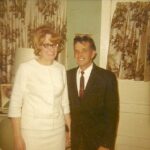
 My husband, Bob’s uncle, Bobby Cole was a fun-loving person who always made people around him laugh. It wasn’t so much that Bobby told a lot of jokes or played a lot of pranks, but more that he liked to laugh and found a lot of things funny. His laugh was an infectious one, and so you found yourself laughing too. I think that was what made going for visits to Kennebec, South Dakota pleasant enough to make it an annual tradition…at least until they moved to Winnemucca, Nevada, which was a little too far to go for just a few days. The trips to Kennebec were inexpensive enough for a young family like ours, because Bobby, and Bob’s aunt, Linda Cole owned the only hotel in that “podunk” town, so there was nothing to spend money on, other than the contribution to the meals. I don’t recall a restaurant, although there might have been one up by the interstate, which was the only reason anyone would actually go through Kennebec. Mostly we would head up to the tiny market to stock up on snacks and meal items for the three or four days we would be there, and then head back to the hotel, where we had a room upstairs to sleep, when we weren’t gathered downstairs in their apartment to play cards or just visit.
My husband, Bob’s uncle, Bobby Cole was a fun-loving person who always made people around him laugh. It wasn’t so much that Bobby told a lot of jokes or played a lot of pranks, but more that he liked to laugh and found a lot of things funny. His laugh was an infectious one, and so you found yourself laughing too. I think that was what made going for visits to Kennebec, South Dakota pleasant enough to make it an annual tradition…at least until they moved to Winnemucca, Nevada, which was a little too far to go for just a few days. The trips to Kennebec were inexpensive enough for a young family like ours, because Bobby, and Bob’s aunt, Linda Cole owned the only hotel in that “podunk” town, so there was nothing to spend money on, other than the contribution to the meals. I don’t recall a restaurant, although there might have been one up by the interstate, which was the only reason anyone would actually go through Kennebec. Mostly we would head up to the tiny market to stock up on snacks and meal items for the three or four days we would be there, and then head back to the hotel, where we had a room upstairs to sleep, when we weren’t gathered downstairs in their apartment to play cards or just visit.
Kennebec wasn’t a place where Bobby and Linda would become millionaires or anything, but it was somewhat close to his family, and family ties are something that often keeps people in an area beyond the financial viability of the lifestyle. Nevertheless, the cost of living in the area was very low too, so they made a comfortable living, and the laid-back lifestyle suited them. It wasn’t that there was nothing to do in Kennebec, because there was. Bobby and Linda were in a square dance club, and they actually traveled around the area going to square dances, complete with the fancy costumes that are common to the old-fashioned dance they loved. These days, I don’t think square dance clubs even exist anymore, although I could be wrong. Maybe they still do in small-town America…who knows. Once they moved to Winnemucca, I never really heard of them 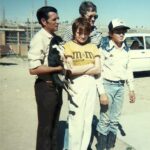
 going to square dances anymore or anywhere else, so maybe it was just a South Dakota thing.
going to square dances anymore or anywhere else, so maybe it was just a South Dakota thing.
I miss those old days of visiting Bobby and Linda, even though it has been many years now since we last went to Kennebec…or to Winnemucca, for that matter. Bobby passed away on May 30, 2014, and Linda on September 22, 2016. It’s hard to believe they have both been in Heaven for so long now. Today would have been Bobby’s 80th birthday. Happy birthday in Heaven, Bobby. We love and miss you very much.
 We have all heard of stunt doubles. They are the people who make the shows we watch seem fearless as they perform their daring feats and even some that aren’t really so daring, but they just don’t want their actors scratched. Somehow these people, at least at a distance look just like the actor they are supposed to be. Sometimes they are very close, as in the case of brothers, David Paul Olsen, who is the stunt double for his brother, Eric Christian Olsen on NCIS Los Angeles. They aren’t twins, but the brothers loo enough alike to pull it off during filming.
We have all heard of stunt doubles. They are the people who make the shows we watch seem fearless as they perform their daring feats and even some that aren’t really so daring, but they just don’t want their actors scratched. Somehow these people, at least at a distance look just like the actor they are supposed to be. Sometimes they are very close, as in the case of brothers, David Paul Olsen, who is the stunt double for his brother, Eric Christian Olsen on NCIS Los Angeles. They aren’t twins, but the brothers loo enough alike to pull it off during filming.
While this is common, there is another type of “double” that is just as often used and is much less known. Government officials such as presidents, kings, and even congress or parliament members have been known to use doubles so that they can travel safely without worrying about being assassinated. Strangely, these doubles are very often denied. We are told that we are imagining things, but when we take a moment to look closely, the differences are obvious. This has gone on throughout history, although probably not as easily as the more recent history.

Sometimes the double goes to extremes, such as plastic surgery, but my guess is that with the more recent ability to make life-like masks, the need for such extreme measures has lessened. Still, anyone who is awake knows that doubles are and likely will always be used to protect or hide that elites who feel the need to move in relative anonymity. The possibilities are endless really. Having a double could mask a death of a high ranking official, such as, it has been believed, Kim Jong-Un, who has been seen looking heavy and then a short time later, thinner, when it would be impossible for him to have lost the weight so quickly. They can deny it all they want to, but when you look at things that are harder to change, like ear lobes, chins, and even teeth that seem to go back and forth from chipped to not chipped. No body double or stunt double is going to be a perfect match, even with plastic surgery. Facial shape and bone structure are going to have slight differences…even in  identical twins…which could be the easiest body double to use, if the twin is not the “important” person his or her sibling is. How awesome would that be to face up to? “Yes, I’m my brother’s body double, because I am expendable.” Right!! How wonderful would that feel for the non-important twin?
identical twins…which could be the easiest body double to use, if the twin is not the “important” person his or her sibling is. How awesome would that be to face up to? “Yes, I’m my brother’s body double, because I am expendable.” Right!! How wonderful would that feel for the non-important twin?
We can argue that some of our prominent politicians these days have body doubles, or we can “stick our heads in the sand” and believe that they don’t, but the reality is that if you look closely, you will see that they very likely do have a double. With the internet, and the multitude of pictures taken of a politician every day, it becomes more and more difficult to deny what is right there in front of our eyes. It up to us to decide to believe what we are told or search out the truth.

 Many of us have seen shows about a spacecraft that got lost in space and is seen wandering around trying to make their way back. Of course, those shows are fiction, but if you were going to explore beyond our galaxy, you would most likely need to send some sort of probe or spaceship out into the far reaches of space to see what it’s like out there. If the empty probe can’t function out there, it’s very likely not a good idea to send a manned spaceship out there. That is what Nasa figured anyway, and so in 1972, Pioneer 10…originally designated Pioneer F, was launched into space. Pioneer 10 is an American space probe, manufactured by TRW Inc. It isn’t overly heavy, weighing just 569 pounds. Its first mission to the planet Jupiter was completed with its closest approach happening on Dec 3, 1973. At that point, Pioneer 10 became the first of five artificial objects to achieve the escape velocity needed to leave the Solar System. At that point, it became part of a space exploration project that was conducted by the NASA Ames Research Center in California.
Many of us have seen shows about a spacecraft that got lost in space and is seen wandering around trying to make their way back. Of course, those shows are fiction, but if you were going to explore beyond our galaxy, you would most likely need to send some sort of probe or spaceship out into the far reaches of space to see what it’s like out there. If the empty probe can’t function out there, it’s very likely not a good idea to send a manned spaceship out there. That is what Nasa figured anyway, and so in 1972, Pioneer 10…originally designated Pioneer F, was launched into space. Pioneer 10 is an American space probe, manufactured by TRW Inc. It isn’t overly heavy, weighing just 569 pounds. Its first mission to the planet Jupiter was completed with its closest approach happening on Dec 3, 1973. At that point, Pioneer 10 became the first of five artificial objects to achieve the escape velocity needed to leave the Solar System. At that point, it became part of a space exploration project that was conducted by the NASA Ames Research Center in California.
“Pioneer 10 was assembled around a hexagonal bus with a 9-foot diameter parabolic dish high-gain antenna, and the spacecraft was spin stabilized around the axis of the antenna. Its electric power was supplied by four radioisotope thermoelectric generators that provided a combined 155 watts at launch. Pioneer was launched on March 2, 1972, by an Atlas-Centaur expendable vehicle from Cape Canaveral, Florida. Between July 15, 1972, and February 15, 1973, it became the first spacecraft to traverse the asteroid belt. Photography of Jupiter began November 6, 1973, at a range of 16,000,000 miles, and about 500 images were transmitted. The closest approach to the planet was on December 4, 1973, at a range of 82,178 miles. During the mission, the on-board instruments were used to study the asteroid belt, the environment around Jupiter, the solar wind, cosmic rays, and eventually the far reaches of the Solar System and heliosphere.”
I find it hard to believe that Nasa thought that the spacecraft would last as long as it did, but I suppose that the further out it went in space, the less it would encounter the kind of space debris that came from Earth. Still, there are meteors and planets, stars that it could be pulled into, and so many more things that could have meant the destruction if the craft. Nevertheless, Pioneer 10 continued to send out radio transmissions continued between Nasa and itself until January 23, 2003, and then only because of the loss of electric power for its radio transmitter. At that point, the probe was at a distance of 12 billion kilometers (7,456,454,306.848 miles) from Earth. 

According to sources, “If left undisturbed, Pioneer 10 and its sister craft Pioneer 11 will join the two Voyager spacecraft and the New Horizons spacecraft in leaving the Solar System to wander the interstellar medium. The Pioneer 10 trajectory is expected to take it in the general direction of the star Aldebaran, currently located at a distance of about 68 light years. If Aldebaran had zero relative velocity, it would require more than two million years for the spacecraft to reach it. Well before that, in about 90,000 years, Pioneer 10 will pass about 0.23 parsecs (0.75 light-years) from the late K-type star HIP 117795. This is the closest stellar flyby in the next few million years of all the four Pioneer and Voyager spacecrafts, which are leaving the Solar System.”
 Production needs during wartime often change dramatically, and the piano industry was no exception. I suppose that such frivolous items as a piano, must go by the wayside when so many much more important things like weapons, military vehicles, and military airplanes were needed so much more. That is what you might logically think anyway. Nevertheless, you would be wrong. During World War II, the famous musical instrument company, Steinway and Sons, did stop making traditional pianos. The biggest reason for the change was because the materials they needed were shifted to the war effort. Still, the company didn’t shut down production entirely. They actually began making things that were needed for the war effort. Things like coffins and parts for military transports became the production like items of the day. It seemed a sad state of affairs for a company that had once brought so much joy and happiness to so many households and concert halls, but it had to be done, so they stepped up and did their part.
Production needs during wartime often change dramatically, and the piano industry was no exception. I suppose that such frivolous items as a piano, must go by the wayside when so many much more important things like weapons, military vehicles, and military airplanes were needed so much more. That is what you might logically think anyway. Nevertheless, you would be wrong. During World War II, the famous musical instrument company, Steinway and Sons, did stop making traditional pianos. The biggest reason for the change was because the materials they needed were shifted to the war effort. Still, the company didn’t shut down production entirely. They actually began making things that were needed for the war effort. Things like coffins and parts for military transports became the production like items of the day. It seemed a sad state of affairs for a company that had once brought so much joy and happiness to so many households and concert halls, but it had to be done, so they stepped up and did their part.
While they made many coffins and parts, strangely, Steinway was also contracted by the War Production Board  to make…pianos!! What?? The government wanted pians that could be set into battle, and when I think of shows like “MASH” with the piano that graced the “Officer’s Club,” that as it turned out, wasn’t just for officers, it makes perfect sense. What better way to boost moral than a piano that could be sent into battle. The new Steinway and Sons pianos were “small, sturdy uprights, painted olive drab and shipped by cargo vessels and transport planes to military theaters around the world.” Called “Victory Verticals” or “G.I. Steinways,” the company made about 3,000 of the pianos in 1942 and 1943. Some of the instruments were actually parachuted into camp complete with tuning tools and instructions. Now all it needed was a soldier who could play, and hopefully not just chop sticks. Others came in by Jeep on a wagon.
to make…pianos!! What?? The government wanted pians that could be set into battle, and when I think of shows like “MASH” with the piano that graced the “Officer’s Club,” that as it turned out, wasn’t just for officers, it makes perfect sense. What better way to boost moral than a piano that could be sent into battle. The new Steinway and Sons pianos were “small, sturdy uprights, painted olive drab and shipped by cargo vessels and transport planes to military theaters around the world.” Called “Victory Verticals” or “G.I. Steinways,” the company made about 3,000 of the pianos in 1942 and 1943. Some of the instruments were actually parachuted into camp complete with tuning tools and instructions. Now all it needed was a soldier who could play, and hopefully not just chop sticks. Others came in by Jeep on a wagon.
As the gifts made their strange arrivals, the men welcomed their arrival. Any camp that was blessed enough to receive a Victory Vertical felt an instant lift of their spirits. One US Army Private, Kenneth Kranes told his  mother in a letter home from North Africa dated May 6, 1943, “Two nights past we received welcome entertainment when a Jeep pulling a small wagon came to camp. The wagon contained a light system and a Steinway pianna. It is smaller and painted olive green, just like the Jeep. We all got a kick out of it and sure had fun after meals when we gathered around the pianna to sing. I slept smiling and even today am humming a few of the songs we sang.” Who would have thought that a company so famed for its elegant musical instruments would find that quite possibly its most famous instrument would be a plain-Jane, olive-drab version of what it expected to be famous for.
mother in a letter home from North Africa dated May 6, 1943, “Two nights past we received welcome entertainment when a Jeep pulling a small wagon came to camp. The wagon contained a light system and a Steinway pianna. It is smaller and painted olive green, just like the Jeep. We all got a kick out of it and sure had fun after meals when we gathered around the pianna to sing. I slept smiling and even today am humming a few of the songs we sang.” Who would have thought that a company so famed for its elegant musical instruments would find that quite possibly its most famous instrument would be a plain-Jane, olive-drab version of what it expected to be famous for.
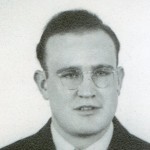
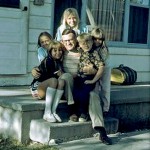 For Christmas, I gifted my grandson, Josh Petersen and his fiancée, Athena Salazar a Cribbage Board game. Since that time, I have been thinking a lot about my uncle, Bill Spencer, who taught me to play Cribbage when I was a kid. We had so many great times playing Cribbage together. Uncle Bill was a stickler for actually “teaching” me the game, without “giving” me the game. I always appreciated that about him, because I knew that when I won…I really won. Uncle Bill was a fair, and sometimes, as with his family history documents, brutally honest man. He didn’t take credit where it wasn’t due him, and he always gave fair and honest praise. I think I am a lot like him in that way. I like things to be fair, honest, and above board.
For Christmas, I gifted my grandson, Josh Petersen and his fiancée, Athena Salazar a Cribbage Board game. Since that time, I have been thinking a lot about my uncle, Bill Spencer, who taught me to play Cribbage when I was a kid. We had so many great times playing Cribbage together. Uncle Bill was a stickler for actually “teaching” me the game, without “giving” me the game. I always appreciated that about him, because I knew that when I won…I really won. Uncle Bill was a fair, and sometimes, as with his family history documents, brutally honest man. He didn’t take credit where it wasn’t due him, and he always gave fair and honest praise. I think I am a lot like him in that way. I like things to be fair, honest, and above board.
It’s hard for me to believe that my Uncle Bill has been in Heaven a little over 2 years now. He passed away on 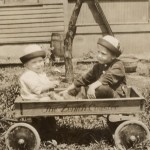
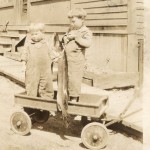 Christmas day, 2020. I didn’t see much of him toward the end, because he had dementia. Still, the times I saw him were such a treasure to me. The fact that he went home to Heaven didn’t really change very much in my life…physically, but it changed so much mentally. I always knew he was there, and while writing him a letter was out of the question, we were able to send him gifts that we knew he would enjoy…even though he wouldn’t know who sent them.
Christmas day, 2020. I didn’t see much of him toward the end, because he had dementia. Still, the times I saw him were such a treasure to me. The fact that he went home to Heaven didn’t really change very much in my life…physically, but it changed so much mentally. I always knew he was there, and while writing him a letter was out of the question, we were able to send him gifts that we knew he would enjoy…even though he wouldn’t know who sent them.
Uncle Bill was my favorite uncle. I loved all my uncles, of course, but Uncle Bill was like me…or, I was like him. I think my dad, Allen Spencer was a lot like his brother too. They were two of a kind…the Spencer boys. Always coming up with some new idea, even if it was a mischievous one. I can practically see God’s, for lack of a better word, reaction to Uncle Bill’s homecoming. My first reaction was, “Hide the dynamite!! The Spencer boys are 
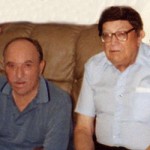 back together!!” Of course, if there is dynamite in Heaven, it will not be a destructive force, but I have no doubt that it will make a loud noise. The Spencer boys would love it if it did, so I’m sure God would make that arrangement…just for them. Today would have been my Uncle Bill’s 101st birthday. I think he would have loved that he almost made it to 100 years old. The only thing that would have pleased him more than 98, or almost 99 years, would have been 100 years. Happy birthday in Heaven, Uncle Bill. You boys be good and have a great party!! We love and miss you, very much.
back together!!” Of course, if there is dynamite in Heaven, it will not be a destructive force, but I have no doubt that it will make a loud noise. The Spencer boys would love it if it did, so I’m sure God would make that arrangement…just for them. Today would have been my Uncle Bill’s 101st birthday. I think he would have loved that he almost made it to 100 years old. The only thing that would have pleased him more than 98, or almost 99 years, would have been 100 years. Happy birthday in Heaven, Uncle Bill. You boys be good and have a great party!! We love and miss you, very much.
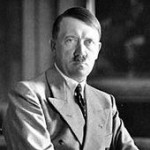
 Anytime a government is going to pull off a big change, there must be meetings…planning meetings, if you will. The Third Reich, under Adolf Hitler had long wanted to literally remove the Jewish people from the face of the earth. They began making plans for what they called “The Final Solution to the Jewish Question” and later called the Wannsee Conference to ensure the co-operation of administrative leaders of various government departments in its implementation.
Anytime a government is going to pull off a big change, there must be meetings…planning meetings, if you will. The Third Reich, under Adolf Hitler had long wanted to literally remove the Jewish people from the face of the earth. They began making plans for what they called “The Final Solution to the Jewish Question” and later called the Wannsee Conference to ensure the co-operation of administrative leaders of various government departments in its implementation.
The Wannsee Conference was called by the director of the Reich Security Main Office SS-Obergruppenführer Reinhard Heydrich and included senior government officials of Nazi Germany and Schutzstaffel (SS) leaders. The conference was held in the Berlin suburb of Wannsee on January 20, 1942. The plan of the “Final Solution” was to deport most of the Jews of German-occupied Europe to occupied Poland, where they would be murdered. Hitler was obsessed with what he considered purifying the world. He wanted to build an Aryan race, which is “white non-Jewish people, especially those of northern European origin or descent typically having blond hair and blue eyes and regarded as a supposedly superior racial group.”
In the course of the meeting, Heydrich outlined how European Jews would be rounded up and sent to extermination camps in the General Government (the occupied part of Poland), where they would be killed. Of course, the meetings were merely a formality. The decisions had been made and they were not asking for the support of the attendees, but rather they were simply telling them what they would be doing…if they wanted to live, that is.
Hitler began his discrimination against Jews began immediately after the Nazi seizure of power on January 30, 1933. At first, he employed violence and economic pressure to encourage Jews to voluntarily leave the country. Sadly, the Jews thought that with compliance, they would be ok, but Hitler was determined to remove them from Germany…one way or the other. Then, after the invasion of Poland in September 1939, Hitler stepped up his plan for the extermination of European Jewry and began the killings.
The killings continued and accelerated after the invasion of the Soviet Union in June 1941. On July 31, 1941, Hermann Göring gave written authorization to Heydrich to “prepare and submit a plan for a ‘total solution of the Jewish question’ in territories under German control and to coordinate the participation of all involved government organizations.” At the Wannsee Conference, Heydrich emphasized that “once the deportation  process was complete, the fate of the deportees would become an internal matter under the purview of the SS. A secondary goal was to arrive at a definition of who was Jewish.” Basically, this meant that the Jewish deportees would simply “disappear” into thin air and never be heard from again. Just one copy of the “Protocol” with circulated minutes of the meeting survived the war. It was found by Robert Kempner in March 1947 among files that had been seized from the German Foreign Office. That copy was used as evidence in the subsequent Nuremberg trials. Like many other Holocaust sites, The Wannsee House is now a Holocaust memorial.
process was complete, the fate of the deportees would become an internal matter under the purview of the SS. A secondary goal was to arrive at a definition of who was Jewish.” Basically, this meant that the Jewish deportees would simply “disappear” into thin air and never be heard from again. Just one copy of the “Protocol” with circulated minutes of the meeting survived the war. It was found by Robert Kempner in March 1947 among files that had been seized from the German Foreign Office. That copy was used as evidence in the subsequent Nuremberg trials. Like many other Holocaust sites, The Wannsee House is now a Holocaust memorial.
 The making of the weapons of warfare is not always an easy task, and sometimes there is a lot of trial and error. When the different countries decided to begin making tanks, there were as many different styles as countries involved. That might sound like a good thing, but making an effective battle tank is no small undertaking, even in the best of times. Building one under the pressure of war is next to impossible. In fact, given the complexity of the machines, high costs, and stress of combat, I don’t know how they managed to make them work at all. Of course, not all tank designs were failures. There were a number of successful tanks, of course. If there hadn’t been we wouldn’t have tanks today. They would have just given up. Nevertheless, there were also a lot of failures.
The making of the weapons of warfare is not always an easy task, and sometimes there is a lot of trial and error. When the different countries decided to begin making tanks, there were as many different styles as countries involved. That might sound like a good thing, but making an effective battle tank is no small undertaking, even in the best of times. Building one under the pressure of war is next to impossible. In fact, given the complexity of the machines, high costs, and stress of combat, I don’t know how they managed to make them work at all. Of course, not all tank designs were failures. There were a number of successful tanks, of course. If there hadn’t been we wouldn’t have tanks today. They would have just given up. Nevertheless, there were also a lot of failures.
Tanks like the Bob Semple Tank, so named for the New Zealand politician tasked with designing it. Sadly, this dud was built with what limited materials or expertise, Semple and his team could get their hands on. The tank was designed after a picture on an American postcard. Basically, it was a tractor wrapped in steel with six  machine guns poking out at different angles. Ok, it might have looked like a tank, but that was about it. To change gear, it had to come to a complete stop…not a good way to ward off the enemy. One of the gunners of the eight-man crew had to lie on a mattress to squeeze into the cramped compartments, so he was pretty much done for it if the tank caught fire.
machine guns poking out at different angles. Ok, it might have looked like a tank, but that was about it. To change gear, it had to come to a complete stop…not a good way to ward off the enemy. One of the gunners of the eight-man crew had to lie on a mattress to squeeze into the cramped compartments, so he was pretty much done for it if the tank caught fire.
In true Hitler style, the Panzer VII Maus was the largest tank ever built. The size of the tank was its biggest downfall. The tank used too much fuel to be a logical option for a country running low on funds. In addition, the tank was so huge that it couldn’t maneuver through tree covered areas, and it was so slow that it couldn’t catch other tanks. It was also a sitting duck for aircraft looking to bomb it, because it just went so slowly.
The T-35, built in the Soviet Union, was the pride of the Red Army…until it was actually used in combat. This tank was outdated before it was built. A five-turret behemoth, it was a battleship on some seriously slow- moving treads. About the only thing it was good for was looking good in a parade. On the field…well, that was another matter. The T-35 required a 10-man crew to operate and many more to maintain. More than half of the 48 tanks used in the first attack in 1941, broke down before reaching the front.
moving treads. About the only thing it was good for was looking good in a parade. On the field…well, that was another matter. The T-35 required a 10-man crew to operate and many more to maintain. More than half of the 48 tanks used in the first attack in 1941, broke down before reaching the front.
Of course, there were other duds too. Probably too many to mention here. The tank was a good idea, and the good ones were like a rolling force field. The problem was that the ones that were poorly designed, rather outnumbered the ones that were good. I suppose that is why there are relatively few tank designs.
 When the first cemeteries were set up, there were no automobiles, so the casket was transported by a horse or ox drawn wagon. This wasn’t exactly a luxury final ride to the final resting place, but I suppose the “honored guest” didn’t know the difference. Sometimes, when the deceased had lived way out in the country, the family chose to bury them on the property, but when they didn’t, the ride to the final resting place was a long one, and rather hard on the families, because it left so much time to just think. In many of these cases, the family had to build a casket before they could bury it. Planned funerals were very unusual. People didn’t often go to the undertaker and sit down to figure it all out, so the casket was also not planned. It gives a whole new perspective to the reason for waiting several days for the burial. We think there is a lot to plan these days…not really so much.
When the first cemeteries were set up, there were no automobiles, so the casket was transported by a horse or ox drawn wagon. This wasn’t exactly a luxury final ride to the final resting place, but I suppose the “honored guest” didn’t know the difference. Sometimes, when the deceased had lived way out in the country, the family chose to bury them on the property, but when they didn’t, the ride to the final resting place was a long one, and rather hard on the families, because it left so much time to just think. In many of these cases, the family had to build a casket before they could bury it. Planned funerals were very unusual. People didn’t often go to the undertaker and sit down to figure it all out, so the casket was also not planned. It gives a whole new perspective to the reason for waiting several days for the burial. We think there is a lot to plan these days…not really so much. 
Hearses were originally “hand-drawn then horse-drawn after the decoration and weight of the hearse increased. The first electric motorized hearses were introduced to the United States in the early 1900s. Petrol-powered hearses began to be produced from 1907 and, after a slow initial uptake due to their high cost, became widely accepted in the 1920s. The vast majority of hearses since then have been based on larger, more powerful car chassis, generally retaining the front end up to and possibly including the front doors but with custom bodywork to the rear to contain the coffin.” On January 15, 1909, came the first use of an automobile hearse in a funeral.
While the first hearse was quite different from the hearses of today, it was really quite ornate. The hearses of today, might seem normal and average, but in some instances, they can be quite unusual too. One hearse I found, really surprised me. If you happen to be a motorcycle fan, you might be interested to know that there is actually a motorcycle hearse. It is a one rider affair, with a very interesting “sidecar” to hold the casket. It is a 
 far cry from the original horse-drawn version, and definitely different from the hand cart version. While funerals these days are unique to the deceased, and that is what makes them beautiful, they were often very plain in times past. Everyone pretty much had the same service with the same songs, and the same words spoken. These days, funerals…planned mostly by the family, are very personalized, sometimes right down to the type of hearse.
far cry from the original horse-drawn version, and definitely different from the hand cart version. While funerals these days are unique to the deceased, and that is what makes them beautiful, they were often very plain in times past. Everyone pretty much had the same service with the same songs, and the same words spoken. These days, funerals…planned mostly by the family, are very personalized, sometimes right down to the type of hearse.

 Because I love to hike, I am always interested when I see something about a trail I’ve never been on. I can’t say that I’ve hiked an extensive number of trails, but most trails interest me anyway. Sometimes it’s just the area of the country, and my imagination kicking into high gear.
Because I love to hike, I am always interested when I see something about a trail I’ve never been on. I can’t say that I’ve hiked an extensive number of trails, but most trails interest me anyway. Sometimes it’s just the area of the country, and my imagination kicking into high gear.
The Sierra Nevada is a mountain range in the Western United States, located between the Central Valley of California and the Great Basin, with most of it located in the state of California, although the Carson Range spur lies primarily in Nevada. The Sierra Nevada is part of the American Cordillera, an almost continuous chain of mountain ranges that forms the western “backbone” of the Americas. There are literally miles and miles of trails leading to such famous places as Yosemite Valley, King’s Canyon, and Sequoia. Yosemite is the most famous one, and probably the one I would most like to hike. Pictures of the falls often grace the internet as people love the challenge of the hike to Yosemite Falls.
The Sierra Nevada runs 400 miles north-south and approximately 70 miles east–west. Besides the mountain tops, waterfalls, trails, and rivers, the area also boasts the largest tree in the world by volume, known as  General Sherman; Lake Tahoe, the largest alpine lake in North America; Mount Whitney at 14,505 feet the highest point in the contiguous United States; and of course, Yosemite Valley sculpted by glaciers from one-hundred-million-year-old granite, containing high waterfalls. The 28,000 square mile mountain range is home to three national parks, twenty wilderness areas, and two national monuments. These areas include Yosemite, Sequoia, and Kings Canyon National Parks, and Devil’s Postpile National Monument. Many of these places are not accessible by roads, although many are. Still from a hiker’s standpoint, these places are much more interesting if they are approached by trail.
General Sherman; Lake Tahoe, the largest alpine lake in North America; Mount Whitney at 14,505 feet the highest point in the contiguous United States; and of course, Yosemite Valley sculpted by glaciers from one-hundred-million-year-old granite, containing high waterfalls. The 28,000 square mile mountain range is home to three national parks, twenty wilderness areas, and two national monuments. These areas include Yosemite, Sequoia, and Kings Canyon National Parks, and Devil’s Postpile National Monument. Many of these places are not accessible by roads, although many are. Still from a hiker’s standpoint, these places are much more interesting if they are approached by trail.
During the years when people headed west to look for gold, the Sierra Nevada was often the destination of choice. Nevertheless, at that time, traveling across the wild west was very dangerous. Many rich travelers had to hire armed men to protect them on dangerous routes. Thankfully that is not the case today, although, there could be times when we feel the need for armed guards. Nevertheless, I have found that on most trails, people 
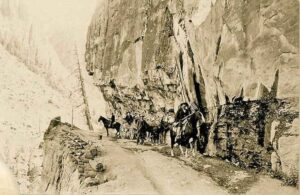 are friendly and kind. Of course, there are always the wild animals, which I have never come across on a trail…perhaps strangely, but true, nevertheless. The biggest “problem animal” I have ever come across was a few cows, who decided that they didn’t want to get off the trail for these strange creatures to pass them. I finally had to slap my hands together, after which, they decided that I was the dangerous one, and they left. One of these days, maybe I will have the opportunity to hike up to Yosemite Falls. I think I would really enjoy it.
are friendly and kind. Of course, there are always the wild animals, which I have never come across on a trail…perhaps strangely, but true, nevertheless. The biggest “problem animal” I have ever come across was a few cows, who decided that they didn’t want to get off the trail for these strange creatures to pass them. I finally had to slap my hands together, after which, they decided that I was the dangerous one, and they left. One of these days, maybe I will have the opportunity to hike up to Yosemite Falls. I think I would really enjoy it.

